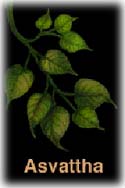About IGNCA
पांच पेड़
पांच पेड़ भारतीय सभ्यता के अत्यन्त महत्वपूर्ण पाँच वृक्षों का रोपण स्वर्गीय प्रधान मंत्री श्री राजीव गाँधी के कर कमलों से संपन्न हुआ। ये वृक्ष केंद्र के विभिन्न प्रभागों से जुड़े हैं और समुचित रूप से इनका पुनःरोपण किया गया है।
Shri Rajiv Gandhi Planting a tree at Inaugruation
 |
अश्वत्था (फ़ाइकस रेलिजियोसा),जो आत्मविश्लेषण काल के बाद ज्ञानोदय के प्रतीक, बोधि वृक्ष के रूप में विख्यात है; स्वयं और मानव चेतना में भावी आत्मज्ञान के लिए सतत खोज, केंद्र का प्रथम सिद्धांत है। यह केंद्रीय वैचारिक स्तंभ है। |
 |
नवग्रोधा (फ़ाइकस बेंगालेन्सिस), विशाल अनुपात में विकसित होने वाला वृक्ष, आध्यात्मिक रूपक का आधार एक ऐसा औंधा पेड़ है, जिसकी शाखाएँ जड़ों में विकसित होती हैं और जड़ें शाखाओं के रूप में बढ़ती हैं। स्थिर केंद्र के साथ चक्र की परिधि के भीतर तरलता अनुमत करते हुए, अतीत और वर्तमान की यह अन्योन्य क्रिया, कायाकल्प और नवीकरण, दूसरा सिद्धांत है। |
 |
अशोक (साराका इंडिका) एक प्राचीन वृक्ष, जिससे महान सम्राट अशोक का नाम व्युत्पन्न हुआ, इसका तात्पर्य है, शोक रहित। वृक्ष और उसके नाम ने भारतीय कला को कुछ अत्यंत महत्वपूर्ण मौलिक रूपांकन उपलब्ध कराए हैं। उर्वरता का प्रतिनिधित्व करते हुए, यह प्राचीन और मध्यकालीन कलाओं में व्याप्त है। यह जीव-विज्ञान के लिए जितना विशिष्ट है उतना ही तत्व-मीमांसा और कलात्मक परंपराओं के लिए महत्वपूर्ण है। यह वृक्ष बहुविषयक दृष्टिकोण का प्रतीक है, जोकि केंद्र का तीसरा मूल सिद्धांत है। अशोक कला निधि के साथ संबद्ध है। . |
 |
अर्जुन (टर्मिनेलिया) वृक्ष जो स्पष्टता और शुद्धता, सीधापन और दिशा, बौद्धिक संयम, कुशाग्रता और सत्यनिष्ठा का प्रतिनिधित्व करता है, केंद्र का चौथा सिद्धांत है। उसके व्यापक संदर्भ-कार्य संबंधी कार्यक्रमों से आशा की जाती है कि भारतीय कलाओं का एक स्पष्ट और अत्यंत संतुलित दृष्टिकोण प्रकट होगा। अर्जुन कला कोश के साथ जुड़ा हुआ है।. |
 |
कदंब (एंथोसिफ़ैलस कादम्बा), एक सुगंधित फूलों वाला वृक्ष है, जो आनंद, आमोद-प्रमोद, खेल, नृत्य और संगीत का प्रतिनिधित्व करता है। हर्ष और आनंद, सुगंध तथा उत्थान सहित रचनात्मकता का सार पाँचवा सिद्धांत है। कदंब कला दर्शन के साथ संबद्ध है। |





